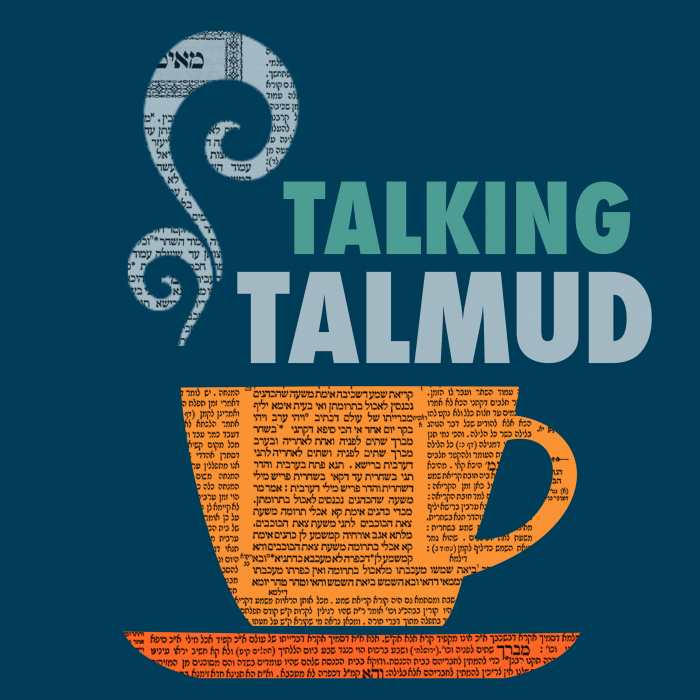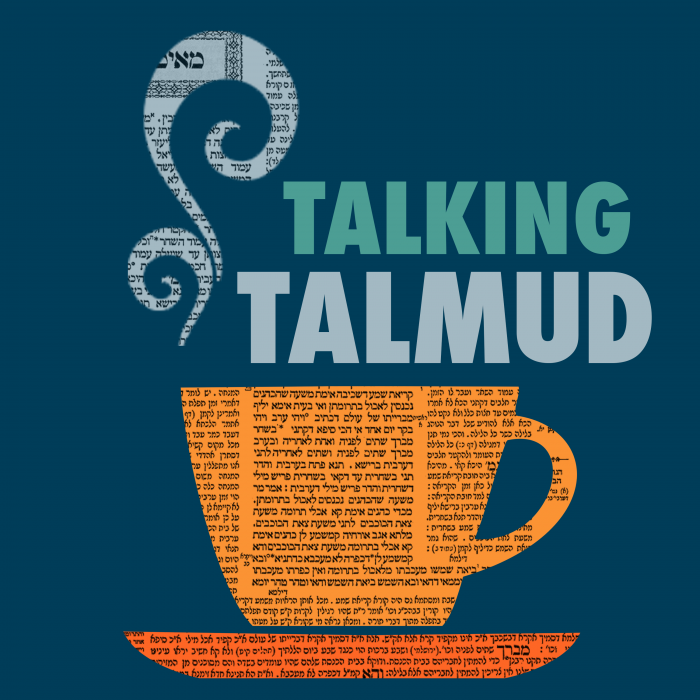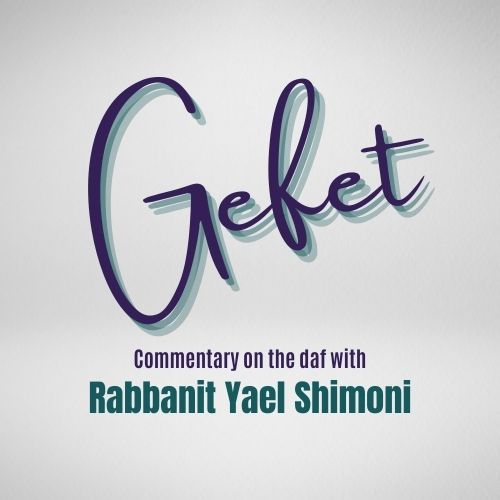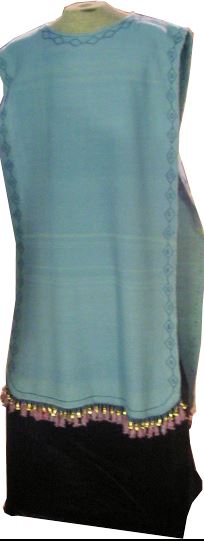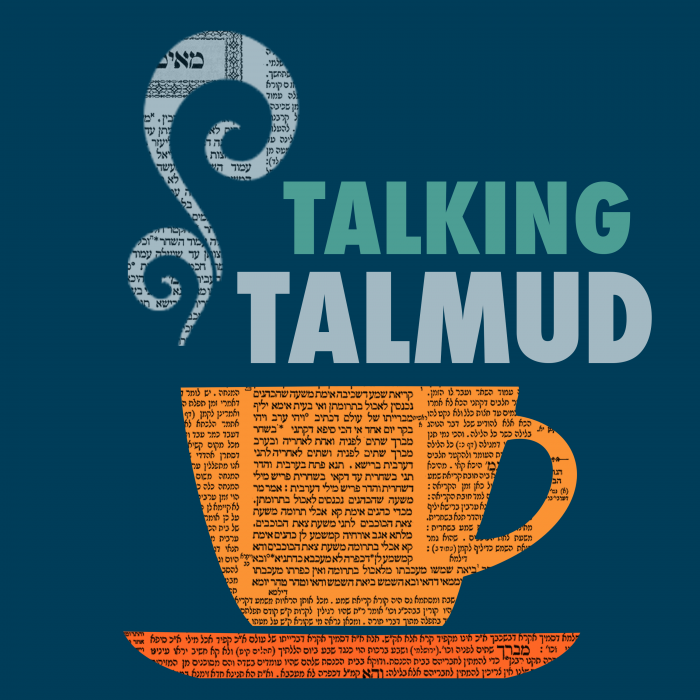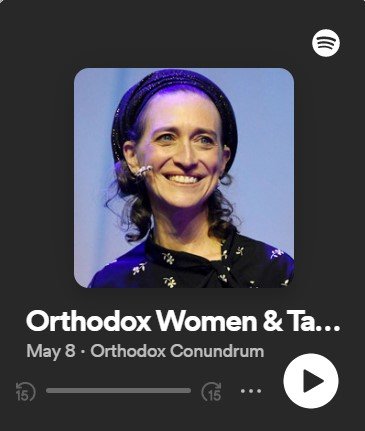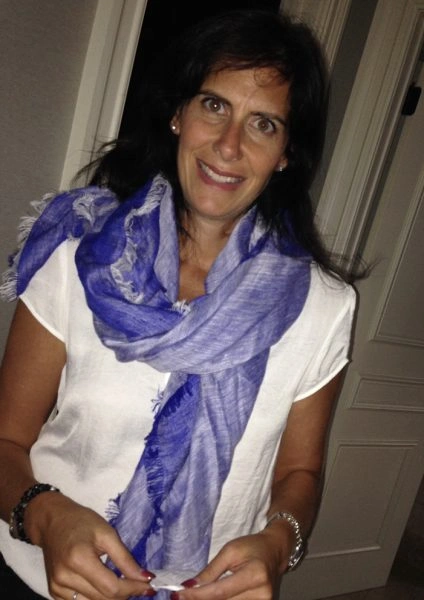Study Guide Menachot 60. Which types of meal offerings need to be brought to the southwestern corner of the altar? From where do we derive which ones are including un this category? By logical arguments or by drashot from the verses?
This month’s learning is dedicated in memory of Rabbi Dr. Raymond Harari z”l, on his 1st yahrzeit. As an educator, principal of Yeshiva of Flatbush, and community rabbi, he inspired thousands with his wisdom, warmth, and unwavering commitment to Torah.
Want to dedicate learning? Get started here:

Today’s daily daf tools:
This month’s learning is dedicated in memory of Rabbi Dr. Raymond Harari z”l, on his 1st yahrzeit. As an educator, principal of Yeshiva of Flatbush, and community rabbi, he inspired thousands with his wisdom, warmth, and unwavering commitment to Torah.
Today’s daily daf tools:
Delve Deeper
Broaden your understanding of the topics on this daf with classes and podcasts from top women Talmud scholars.
New to Talmud?
Check out our resources designed to help you navigate a page of Talmud – and study at the pace, level and style that fits you.
The Hadran Women’s Tapestry
Meet the diverse women learning Gemara at Hadran and hear their stories.
Menachot 60
הוי רבוי אחר רבוי ואין רבוי אחר רבוי אלא למעט
this is one amplificatory expression after another, one in the context of the oil and the other in the context of the frankincense. And there is a principle that one amplificatory expression after another serves only to restrict. Consequently, the placement of frankincense on any amount of a meal offering of a sinner disqualifies the meal offering.
ואיכא דאמרי אמר רב יצחק בר יוסף בעי רבי יוחנן נתן משהו שמן על גבי כזית מנחה מהו מי בעינן שימה כנתינה או לא תיקו
And there are those who say there is a different version of the discussion: Rav Yitzḥak bar Yosef says that Rabbi Yoḥanan raises a dilemma: If one placed oil of any amount on top of an olive-bulk of a meal offering of a sinner, what is the halakha? The Gemara clarifies: Since the Torah states with regard to oil: “He shall place no oil upon it,” whereas with regard to frankincense it states: “Neither shall he give any frankincense upon it,” do we require that the placing of the oil must be like the giving of the frankincense, which must be an olive-bulk, or not? No answer was found, and therefore the Gemara states that the dilemma shall stand unresolved.
נתן שמן על שיריה ת”ר (ויקרא ה, יא) לא ישים עליה שמן ולא יתן יכול בשני כהנים
§ The mishna teaches: If one placed oil on the remainder of a meal offering of a sinner or a meal offering of jealousy brought by a sota, he does not violate a prohibition. Concerning this, the Sages taught in a baraita: When the verse states: “He shall place no oil upon it, neither shall he give any frankincense upon it,” one might have thought that this separation into two distinct prohibitions applies only where two priests perform these actions, one of whom places oil on the meal offering while the other puts frankincense. Perhaps in this case each of them is separately liable to receive lashes, but if one priest put both oil and frankincense on a meal offering, one might have thought he receives only one set of lashes.
תלמוד לומר עליה בגופה של מנחה הכתוב מדבר ולא בכהן
Therefore, the verse states: “Upon it,” with regard to both the oil and the frankincense, which indicates that the verse is speaking of the meal offering itself, and it is not referring to the priest who performs the service. Since both prohibited actions can be performed on the same meal offering, an individual who does both is liable to receive two sets of lashes.
יכול לא יתן כלי על גבי כלי ואם נתן פסל תלמוד לומר עליה בגופה של מנחה הכתוב מדבר:
Furthermore, one might have thought this verse means one may not even place a vessel containing oil or frankincense on top of a vessel that contains the meal offering, and that if one placed such a vessel on the meal offering he has thereby disqualified it. Therefore, the verse states “upon it,” which indicates that the verse is speaking about the meal offering itself. One may not place oil or frankincense on the meal offering itself, but it is not prohibited to place a vessel containing oil or frankincense upon a vessel that contains the meal offering.
מתני׳ יש טעונות הגשה ואין טעונות תנופה הגשה ותנופה תנופה ולא הגשה לא תנופה ולא הגשה
MISHNA: There are four categories of meal offerings: Those that require bringing near, a rite that requires the priests to carry the offering in their hands and bring it near the southwest corner of the altar, but do not require waving; those that require both bringing near and waving; those that require waving but not bringing near; and those that require neither waving nor bringing near.
ואלו טעונות הגשה ואין טעונות תנופה מנחת הסולת והמחבת ומרחשת והחלות והרקיקין מנחת כהנים ומנחת כהן משיח מנחת נכרים מנחת נשים ומנחת חוטא
The mishna elaborates: And these are the meal offerings that require bringing near but do not require waving: The fine-flour meal offering; the meal offering prepared in a pan; the meal offering prepared in a deep pan; the meal offering baked in an oven, which can be brought in the form of loaves or in the form of wafers; the meal offering of priests; the meal offering of the anointed priest; the meal offering of gentiles; a meal offering brought by women; and the meal offering of a sinner.
רבי שמעון אומר מנחת כהנים ומנחת כהן משיח אין בהן הגשה לפי שאין בהן קמיצה וכל שאין בהן קמיצה אין בהן הגשה:
Rabbi Shimon says: The meal offering of priests and the meal offering of the anointed priest do not require bringing of the meal offering near to the altar, due to the fact that there is no removal of a handful in their sacrifice, and there is a principle that with regard to any meal offering where there is no removal of a handful in their sacrifice, there is also no bringing near.
גמ׳ אמר רב פפא כל היכא דתנן עשר תנן מאי קמ”ל
GEMARA: Rav Pappa stated a principle with regard to all the mishnayot in tractate Menaḥot: Anywhere that we learned in a mishna that one brings a meal offering, we learned that one must bring ten items of the same type, either loaves or wafers. The Gemara asks: What is Rav Pappa teaching us?
לאפוקי מדרבי שמעון דאמר מחצה חלות ומחצה רקיקין יביא קמ”ל דלא
The Gemara explains: This statement of Rav Pappa serves to exclude the opinion of Rabbi Shimon, who says: One who takes a vow to bring a meal offering baked in an oven must bring ten items. If he wishes he may bring ten loaves or ten wafers, and if he wishes he may bring half of them as loaves and the other half as wafers. Rav Pappa teaches us that the tanna of the mishna maintains that one may not do so; all ten must be of the same type.
מנא הני מילי דתנו רבנן אילו נאמר (ויקרא ב, ח) והבאת אשר יעשה מאלה לה’ והקריבה אל הכהן והגישה הייתי אומר אין לי שטעון הגשה אלא קומץ בלבד
§ The mishna teaches that the first tanna and Rabbi Shimon disagree about whether the meal offering of priests and the meal offering of the anointed priest require the ritual of bringing near. The Gemara asks: From where are these matters derived? The Gemara answers: As the Sages taught in a baraita: A verse discussing the meal offering prepared in the pan states: “And you shall bring the meal offering that is made of these to the Lord, and it shall be drawn near to the priest, and he shall bring it near to the altar” (Leviticus 2:8). If the verse had stated only: And you shall bring that which is made of these to the Lord and it shall be drawn near to the priest and he shall bring it near to the altar, omitting the words: The meal offering, I would say: I have derived only that the handful that is sacrificed on the altar alone requires bringing near.
מנחה מנין תלמוד לומר מנחה מנחת חוטא מנין תלמוד לומר את המנחה
From where is it derived that this halakha applies to the entire meal offering? The verse states the superfluous term: “The meal offering,” which indicates that one must bring the entire meal offering to the altar prior to the removal of the handful. The baraita further asks: From where is it derived that this halakha applies to the meal offering of a sinner? The verse states: “The meal offering.” The addition of the definite article serves to include the meal offering of a sinner.
ודין הוא נאמר הכא
The baraita raises a difficulty: Why is a verse necessary to teach that the requirement of bringing near applies to the meal offering of a sinner? But this halakha is capable of being derived by logical inference. The baraita elaborates: The procedure of bringing a meal offering is stated here, in the context of the meal offering of a sinner,
מנחת חובה ונאמר הכא מנחת נדבה
which is an obligatory meal offering; and it is stated there, with regard to the deep-pan meal offering, which is a voluntary meal offering. Just as a voluntary meal offering requires bringing near, so too an obligatory meal offering, such as the meal offering of a sinner, requires bringing near.
מה מנחת נדבה טעונה הגשה אף מנחת חובה טעונה הגשה מה למנחת נדבה שכן טעונה שמן ולבונה מנחת סוטה תוכיח
The baraita rejects this inference: What is notable about a voluntary meal offering? It is notable in that it requires oil and frankincense upon it, rendering its halakha more stringent than that of the meal offering of a sinner, which does not include oil and frankincense. Therefore, it would be logical to suggest that a voluntary meal offering requires bringing near but the meal offering of a sinner does not. The baraita responds: The meal offering brought by a sota, i.e., the meal offering of jealousy, can prove that this factor is not decisive, as it does not include oil and frankincense either, and yet it requires bringing near.
מה למנחת סוטה שכן טעונה תנופה מנחת נדבה תוכיח
The baraita rejects this claim: One cannot derive the halakha of the meal offering of a sinner from the meal offering brought by a sota, as there is another requirement that applies to the meal offering brought by a sota but not to the meal offering of a sinner: What is notable about the meal offering brought by a sota? It is notable in that it requires waving, whereas the meal offering of a sinner does not. The baraita responds: The voluntary meal offering can prove that waving is not the decisive factor, as a voluntary meal offering does not require waving and yet it requires bringing near.
וחזר הדין לא ראי זה כראי זה ולא ראי זה כראי זה הצד השוה שבהן ששוו לקמיצה ושוו להגשה אף אני אביא מנחת חוטא ששוה להן לקמיצה תשוה להן להגשה
Therefore, the inference has reverted to its starting point, as the aspect of this case is not like the aspect of that case and the aspect of that case is not like the aspect of this case; their common element is that the voluntary meal offering and the meal offering brought by a sota are equal with regard to the requirement of the removal of a handful, and similarly they are equal with regard to the requirement of bringing near. I will also bring the additional case of the meal offering of a sinner, which is equal to them with regard to the requirement of the removal of a handful, and conclude that it should likewise be equal to them with regard to the requirement of bringing near.
מה להצד השוה שבהן שכן הוכשרו לבא בעשיר כבעני תאמר במנחת חוטא שלא הוכשרה לבא בעשיר כבעני תלמוד לומר את המנחה
The baraita rejects this suggestion: What is notable about the common element of the voluntary meal offering and the meal offering brought by a sota? It is notable in that they are suited to come as the meal offering of a wealthy person just as they are suited to come as the meal offering of a poor person. Shall you say the same with regard to the meal offering of a sinner, which is not suitable to come either as the meal offering of a wealthy person or as the meal offering of a poor person, since a sinner who is not poor does not bring a meal offering but a different offering (see Leviticus 5:6–11)? Therefore, the verse states: “The meal offering” (Leviticus 2:8), with the addition of the definite article, to include the meal offering of a sinner in the requirement of bringing near.
רבי שמעון אומר והבאת לרבות מנחת העומר להגשה וכן הוא אומר (ויקרא כג, י) והבאתם את עומר ראשית קצירכם אל הכהן והקריבה לרבות מנחת סוטה להגשה וכן הוא אומר (במדבר ה, כה) והקריב אותה אל המזבח
Rabbi Shimon adds to the logical inference and says that other cases are included in the derivation from the verse, as the term “and you shall bring” serves to include the omer meal offering in the requirement of bringing near to the altar; and so the verse states with regard to the omer meal offering: “Then you shall bring the omer, the first of your harvest to the priest” (Leviticus 23:10). Furthermore, “and it shall be drawn near” serves to include the meal offering brought by a sota in the requirement of bringing near; and so the verse states with regard to the meal offering brought by a sota: “And draw it near to the altar” (Numbers 5:25).
ודין הוא ומה מנחת חוטא שאינה טעונה תנופה טעונה הגשה מנחת סוטה שטעונה תנופה אינו דין שטעונה הגשה מה למנחת חוטא שכן באה חיטין
The baraita challenges: But this halakha is capable of being derived a fortiori by logical inference: And if the meal offering of a sinner, which includes a lenient aspect, as it does not require waving, nevertheless requires bringing near, then with regard to the meal offering brought by a sota, which does require waving, is it not logical to conclude that it should require bringing near? The baraita rejects this logical inference, as there is a stringency that applies to the meal offering of a sinner which does not apply to the meal offering brought by a sota: What is notable about the meal offering of a sinner? It is notable in that it comes from wheat, whereas the meal offering brought by a sota comes from barley, an inferior product.
מנחת העומר תוכיח מה למנחת העומר שכן טעונה שמן ולבונה מנחת חוטא תוכיח
The baraita responds: The omer meal offering can prove that this factor is not decisive, as it also comes from barley, and yet it requires bringing near. Therefore, the same should apply to the meal offering brought by a sota. The baraita rejects this claim: What is notable about the omer meal offering? It is notable in that it requires oil and frankincense, whereas the meal offering brought by a sota does not. The baraita answers: The meal offering of a sinner can prove that the requirement of oil and frankincense is not a decisive factor, as the meal offering of a sinner does not require oil and frankincense and yet it requires bringing near.
וחזר הדין לא ראי זה כראי זה ולא ראי זה כראי זה הצד השוה שבהן ששוו לקמיצה ושוו להגשה אף אני אביא מנחת סוטה ששוותה להן לקמיצה תשוה להן להגשה
Consequently, the inference has reverted to its starting point, as the aspect of this case is not like the aspect of that case and the aspect of that case is not like the aspect of this case; their common element is that both the omer meal offering and the meal offering of a sinner are equal with regard to the requirement of the removal of a handful, and they are equal with regard to the requirement of bringing near. I will also bring the additional case of the meal offering brought by a sota, which is equal to them with regard to the requirement of the removal of a handful, and conclude that it should likewise be equal to them with regard to the requirement of bringing near.
מה להצד השוה שבהן שכן לא הוכשרו לבא קמח תאמר מנחת סוטה שהוכשרה לבא קמח תלמוד לומר והקריבה
The baraita rejects this suggestion: What is notable about the common element of the omer meal offering and the meal offering of a sinner? It is notable in that they are both not suited to come as coarse flour, but only as fine flour. Shall you say the same with regard to the meal offering brought by a sota, which is suited to come as coarse flour? Therefore, the verse states: “And draw it near,” which serves to include the meal offering brought by a sota in the requirement of bringing near.
ר’ יהודה אומר והבאת לרבות מנחת סוטה להגשה וכן הוא אומר (במדבר ה, טו) והביא את קרבנה עליה
It was stated that Rabbi Shimon derives from the term “and you shall bring” (Leviticus 2:8), written in the context of the deep-pan meal offering, that the omer meal offering is included in the requirement of bringing near. Conversely, Rabbi Yehuda says: The term “and you shall bring” serves to include the meal offering brought by a sota in the requirement of bringing near; and so the verse states with regard to the meal offering brought by a sota: “Then the man shall bring his wife to the priest, and shall bring her offering for her, a tenth of an ephah of barley flour; he shall pour no oil upon it, nor give frankincense upon it, for it is a meal offering of jealousy, a meal offering of memorial, bringing iniquity to remembrance” (Numbers 5:15).
אבל מנחת העומר לא צריכא קרא מאי טעמא מדינא קא אתיא ומה מנחת חוטא שאינה טעונה תנופה טעונה הגשה מנחת העומר שטעונה תנופה אינו דין שטעונה הגשה
But with regard to the omer meal offering, a verse is not needed to teach that it requires bringing near. The baraita asks: What is the reason that no verse is needed for the omer meal offering? It is because this halakha is derived a fortiori by logical inference: And if the meal offering of a sinner, which includes a lenient aspect, as it does not require waving, nevertheless requires bringing near, then with regard to the omer meal offering, which includes a stringent aspect, as it does require waving, is it not logical to conclude that it should require bringing near?
מה למנחת חוטא שכן באה חיטין מנחת סוטה תוכיח מה למנחת סוטה שכן באה לברר עון דמזכרת עון היא מנחת חוטא תוכיח
The baraita rejects this inference: What is notable about the meal offering of a sinner? It is notable in that it comes from wheat, whereas the omer meal offering comes from barley. The baraita responds: The meal offering brought by a sota can prove that this factor is not decisive, as it comes from barley and yet it requires bringing near. The same should apply to the omer meal offering. The baraita rejects this claim: What is notable about the meal offering brought by a sota? It is notable in that it comes to clarify whether or not the wife committed the transgression of adultery, as it is described with the phrase: “Bringing iniquity to remembrance,” whereas the omer meal offering does not come to clarify whether or not one transgressed. The baraita answers: The meal offering of a sinner can prove otherwise, as it does not come to clarify transgression and yet it requires bringing near.
וחזר הדין לא ראי זה כראי זה ולא ראי זה כראי זה הצד השוה שבהן שכן שוו לקמיצה ושוו להגשה אף אני אביא מנחת העומר ששוותה להן לקמיצה תשוה להן להגשה
Therefore, the inference has reverted to its starting point, as the aspect of this case is not like the aspect of that case and the aspect of that case is not like the aspect of this case; their common element is that both the meal offering brought by a sota and the meal offering of a sinner are equal with regard to the requirement of the removal of a handful, and they are equal with regard to the requirement of bringing near. I will also bring the additional case of the omer meal offering, which is equal to them with regard to the requirement of the removal of a handful, and conclude that it should likewise be equal to them with regard to the requirement of bringing near. In this manner the requirement of bringing the omer meal offering near to the altar is derived jointly from the meal offering brought by a sota and the meal offering of a sinner.
ומאי פרכת רבי שמעון פריך הכי מה להצד השוה שבהן שכן מצויין
The Gemara asks: And how would you refute this logical inference? In other words, there is no refutation of this claim, and it is therefore unclear why it was necessary for Rabbi Shimon to derive the requirement of bringing near concerning the omer meal offering from the term: “And you shall bring.” The Gemara answers: Rabbi Shimon refutes the claim in this manner: What is notable about the common element of the meal offering brought by a sota and the meal offering of a sinner? It is notable in that they are common offerings, i.e., they can be brought many times over the course of a year, whereas the omer offering is sacrificed only once a year.
ורבי יהודה אדרבה הא מצוייה טפי הנך זימנין דלא משכחת לה כלל
The Gemara asks: And how does Rabbi Yehuda respond to this claim? He maintains that this is not a valid refutation, as on the contrary, this omer meal offering is more common than the meal offering brought by a sota and the meal offering of a sinner. The omer meal offering is definitely brought once a year, whereas in the case of these offerings, there may be times when you do not find it at all, if no poor sinners come forward and no women are accused of adultery by their husbands.
או אינו אומר והבאת אלא שיחיד מתנדב ומביא מנחה אחרת חוץ מאלה שבענין
The Gemara cites a baraita: Or perhaps when the verse states: “And you shall bring,” this does not serve to teach about the requirement of bringing near but rather is written for a different reason: To indicate that an individual Jew may donate and bring a different kind of meal offering, one made from barley, apart from these five meal offerings, all made from wheat, which the verse mentions with regard to this matter (see Leviticus 2:1–13). The five offerings are the fine-flour meal offering, the meal offering prepared in the pan, the meal offering prepared in the deep pan, and the meal offering baked in the oven, either in the form of loaves or in the form of wafers.
ודין הוא ציבור מביא מנחה מן החיטין חובה ומביא מנחה מן השעורים חובה אף יחיד שמביא מנחה מן החיטין נדבה (יכול) יביא מנחה מן השעורין נדבה תלמוד לומר אלה אין לי אלא אלה
And this halakha is necessary because the opposite conclusion could otherwise have been derived by logical inference based on juxtaposition: The community brings an obligatory meal offering from wheat, i.e., the two loaves brought on the festival of Shavuot, and the community also brings an obligatory meal offering from barley, the omer meal offering. So too an individual, who brings a meal offering from wheat as a voluntary gift offering, can likewise bring a meal offering from barley as a voluntary gift offering. Therefore, to prevent this inference, the verse states: “And you shall bring the meal offering that is made of these to the Lord” (Leviticus 2:8), which teaches: I have nothing other than these five meal offerings as individual meal offerings.
או אינו אומר אלה אלא לאומר הרי עלי מנחה שמביא חמישתן תלמוד לומר מאלה רצה אחת מביא רצה חמישתן מביא
The baraita raises a difficulty: Or perhaps the verse states “these” not in order to exclude other individual meal offerings but rather to teach a halakha with regard to one who takes a vow to bring a meal offering and says: It is incumbent upon me to bring a meal offering, without specifying a particular type of meal offering, and it teaches that he must bring all five of them. The baraita explains: The verse states: “Of these,” which indicates that if the one who took a vow wants, he brings one meal offering, and if he wants, he brings all five of them.
רבי שמעון אומר את המנחה לרבות שאר מנחות כגון מנחת נכרים מנחת נשים להגשה יכול שאני מרבה אף שתי הלחם ולחם הפנים תלמוד לומר מאלה
The baraita continues: Rabbi Shimon says: When the verse states: “The meal offering” (Leviticus 2:8), this serves to include the other meal offerings, for example the meal offering of gentiles and a meal offering brought by women, with regard to the requirement of bringing near. One might have thought that I should include from this verse even the two loaves and the shewbread. Therefore, the verse states: “Of these,” which indicates that not all meal offerings are included in the requirement of bringing near.
ומה ראית לרבות שאר מנחות ולהוציא שתי הלחם ולחם הפנים מרבה אני שאר מנחות שיש מהן לאישים ומוציא אני שתי הלחם ולחם הפנים שאין מהן לאישים
The baraita asks: And what did you see that led you to include the other meal offerings in the requirement of bringing near, and to exclude the two loaves and the shewbread from this halakha? One could suggest the opposite conclusion, to include these two offerings while excluding the others. The baraita answers: I include the other meal offerings, as there is a portion of them burned in the fire on the altar, and I exclude the two loaves and the shewbread from the requirement of bringing near, as there is no portion of them burned in the fire on the altar. Rather, they are eaten by the priests in their entirety.
והלא מנחת נסכים כולה לאישים יכול יהא טעונה הגשה תלמוד לומר והקריבה
The baraita asks: But with regard to the meal offering brought with libations, which is entirely burned in the fire, by this logic one might have thought that it should require bringing near. The baraita answers: The verse states: “And you shall bring the meal offering that is made of these to the Lord, and it shall be drawn near to the priest, and he shall bring it near to the altar” (Leviticus 2:8). This indicates that the requirement of bringing near applies only to those meal offerings listed in this chapter, not to the meal offering brought with libations, which is not mentioned.
והא אפיקתיה והקריב והקריבה ומה ראית לרבות שאר מנחות ולהוציא מנחת נסכים
The baraita asks: But didn’t you already derive from the term: “And it shall be drawn near,” that the meal offering brought by a sota is included in the requirement of bringing near? The baraita answers: As the verse could have stated: And shall be drawn near, and instead it states: “And it shall be drawn near,” this addition serves to exclude the meal offering brought with libations from the requirement of bringing near. The baraita asks: And what did you see that led you to include the other meal offerings in the requirement of bringing near and to exclude the meal offering brought with libations from this requirement?



